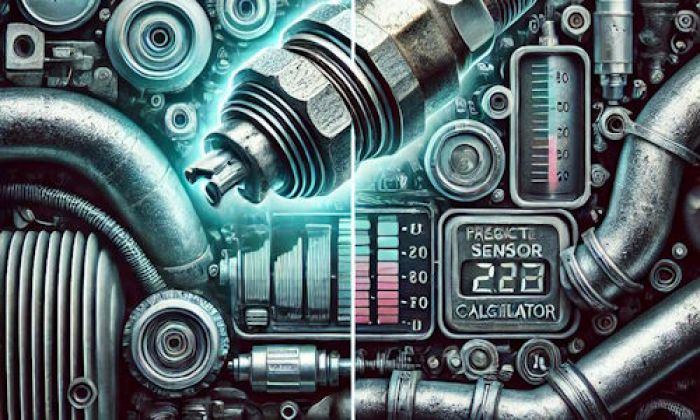On one winter day, you woke up, ready to go about your day. You've done your morning routine and sat behind the car. Little did you know you were about to be shocked out of your regular schedule. As you started your car, a terrible screeching noise broke the morning quiet. Your car then functioned normally, until you sped up. Then, the noise returned. What caused your car to make a screeching noise when you start it cold?
Starting engine noises highlights
- Level of urgency:High
- Can you drive?Mostly, yes
- DIY inspection:Almost impossible
- DIY repair:Impossible
- Price for repair:$250 - $900
- Common Reasons:Starter, flywheel, engine problems, belts, pulleys
- Ways to fix:Inspect everything that rotates when starting the car, replace the broken units

What causes your car to make a screeching noise when you start it cold?
If you drive your car every day, you know what it's supposed to sound like. Any sound out of the ordinary is thus a big reason for concern. While some noises point to more serious issues than others, you shouldn't ignore any of them.
As for the screeching noise when starting your car cold, it generally results from a failing serpentine belt. Also known as the drive belt, this component powers up accessories such as the alternator, air-conditioner, and power steering. In some vehicles, it also drives the water pump.
While the serpentine belt is a vital part of your vehicle, it wasn't built to last. It's especially vulnerable to cold weather. This is because it's made of rubber, a material that gets stiff and brittle when the temperature drops. As it hardens, it can't keep up with the sudden motion of the pulleys. Hence the screeching noise.
While this is not the only reason why you may hear a screeching noise when you start your car cold, it's the most common one. You likely won't need to look further than the belt if you're having this issue.
Is the screeching noise when starting your car cold a serious issue?
If this issue has a silver lining, it's that it's rarely serious. Unless your serpentine belt breaks completely, you can still drive your car normally. That is if you don't mind hearing the screeching noise whenever you start it.
Still, we don't recommend ignoring this issue. At the very least, you should check the condition of your serpentine belt. If it is cracked or frayed, the odds are it will snap soon. Once it does, your car will stop functioning. This is because the belt drives the alternator, which supplies power to your entire vehicle.
If the belt is slipping or even slightly damaged, the accessories it drives may not work as well as they usually do. Though it's not necessarily a serious issue, it will affect the overall quality of your driving.
What symptoms other than the screeching noise can you expect?
Hearing the screeching noise whenever you start your vehicle on a cold day is often just the tip of the iceberg. Left unchecked, your serpentine belt issues will only get worse. And while you might not mind hearing an annoying screeching noise, the other symptoms are much more serious.
Here are 4 other symptoms you may experience when your serpentine belt starts to fail:
1) Your Battery Light lights up on your dashboard
While most car issues will turn on the 'Check Engine' light, this isn't the case with a serpentine belt. Unless it breaks completely, the belt won't affect your engine much.
What it will affect is your battery. This is because the belt drives your alternator, which charges your battery. If the belt starts slipping or cracking, your battery may lose its charge faster than usual. This can also affect your car's components that rely on electricity. These include your headlights, interior lights, and windshield wipers.
Don't forget that you also need your battery to start your car. If your battery dies, you won't be able to start your car at all.
2) Your engine keeps overheating
Your vehicle's water pump is driven either by the timing belt or the serpentine belt. If it uses a serpentine belt, you may also experience an overheating engine.
The water pump moves the coolant around the engine, helping it absorb excessive heat. When the serpentine belt fails, your water pump will not work properly. As a result, your engine will keep overheating. If this keeps happening for a long time, it will eventually break down. Engine repairs are very expensive, so make sure you address this problem as soon as you can.
3) You'll have a hard time steering
Though not many people know this, most modern vehicles use power steering to help you move the steering wheel. Without it, you'll have a harder time turning your car. This can be dangerous in some cases.
4) You may hear other noises
The screeching noise when you start your car cold isn't the only sound you may experience. As the drive belt fails, you may also hear high-pitched noises when you accelerate or make a sharp turn.
How long should a serpentine belt last?
No matter what car you own, you'll have to replace your serpentine sooner or later. If you plan to own the car for a long time, you may have to replace it several times. But how often should you change it?
It all comes down to the material it's made of. While all serpentine belts are made of reinforced rubber, this material comes in two types.
Older models use neoprene serpentine belts. These tend to break down more often. Expect to replace your neoprene belt every 50,000 miles or so.
Newer vehicles come with serpentine belts made of EPDM (ethylene propylene diene monomer) rubber. Manufacturers chose it because it lasts longer. If your car has a belt made of EPDM, it should last for up to 100,000 miles.
Keep in mind that these numbers are just very rough averages. Several factors may reduce your serpentine belt's lifespan. For example, living in a cold climate or neglecting your regular maintenance.
How to fix the screeching noise when you start your car cold?
Fixing the screeching noise when you start your car in cold weather depends on what caused it in the first place. Before you do anything, make sure you physically inspect the belt to identify the problem.
- No signs of damage/well-fitting belt
If you can find no signs of damage and the belt seems to fit well, the problem may just be the cold weather. Since the rubber tends to go stiff in the cold, it will make a screeching noise when it first starts moving. The problem should disappear once it warms up.
- The belt is slipping
Slipping usually happens once you rack up enough miles on your car. In this case, you can simply reattach the belt back to the pulleys, which should fix the issue. Keep in mind that this may be a temporary solution. If the belt is loose because of age, it will keep slipping and you may have to replace it.
- The belt is damaged
If you can see visible signs of damage on your serpentine belt, you should replace it as soon as possible. This indicates that the serpentine belt is about to break. Once it does, you won't be able to drive your vehicle.
How much does it cost to fix the screeching noise when you start your car cold?
If you want to get rid of the screeching noise when you start your car cold, you'll likely have to replace your serpentine belt. Luckily, it is one of the cheapest car parts.
The belt itself costs between $20 - $100, for average car models. For luxury ones, it can be up to $200 or even higher. Keep in mind that these are just estimates. The prices may vary depending on your location as well.
Labor costs can significantly increase the final repair price. They range from $100 to $200, which is often more than the cost of the belt itself.
If you're feeling confident, you can replace the belt yourself to save a lot of money.
Our final thoughts
On cold days, your vehicle may screech when you start it. This usually happens because of a failing serpentine belt. While you can still drive your car with a slipping belt, it may soon break down completely. When that happens, you won't be able to drive. To prevent this from happening, make sure you check the belt as soon as you can.
Low temperatures make the belt harden, meaning it's harder to turn. This is what caused the belt to produce the screeching noise. If your belt isn't otherwise damaged, the problem should go away as your car warms up.
In case the belt is slipping or damaged, accessories such as the alternator, power steering, and A/C won't perform as well as they usually do. In case of total failure, the alternator won't work at all. As a result, your battery will die and you won't be able to start your vehicle again.
To fix the screeching sound, you may have to reattach the slipping belt to the pulleys. However, this is often just a temporary solution. The best way to deal with the screeching sound is to replace the belt. This component is cheap and replacing it early will save you a lot of frustration and money in the long run.
About the authors
The CarAraC research team is composed of seasoned auto mechanics and automotive industry professionals, including individuals with advanced degrees and certifications in their field. Our team members boast prestigious credentials, reflecting their extensive knowledge and skills. These qualifications include: IMI: Institute of the Motor Industry, ASE-Certified Master Automobile Technicians; Coventry University, Graduate of MA in Automotive Journalism; Politecnico di Torino, Italy, MS Automotive Engineering; Ss. Cyril and Methodius University in Skopje, Mechanical University in Skopje; TOC Automotive College; DHA Suffa University, Department of Mechanical Engineering






Add comment